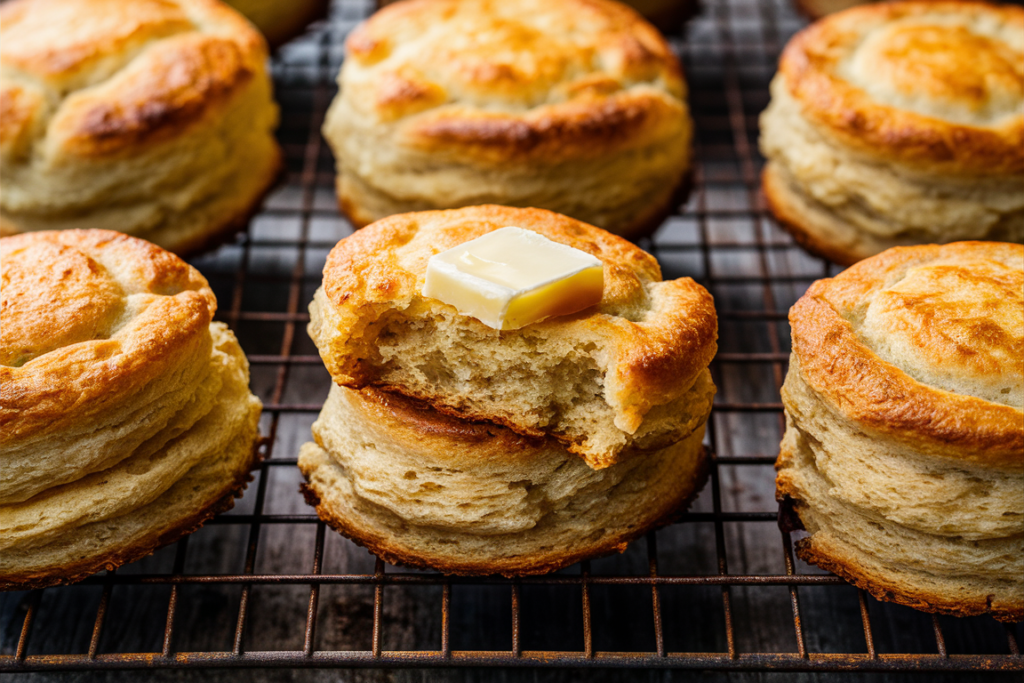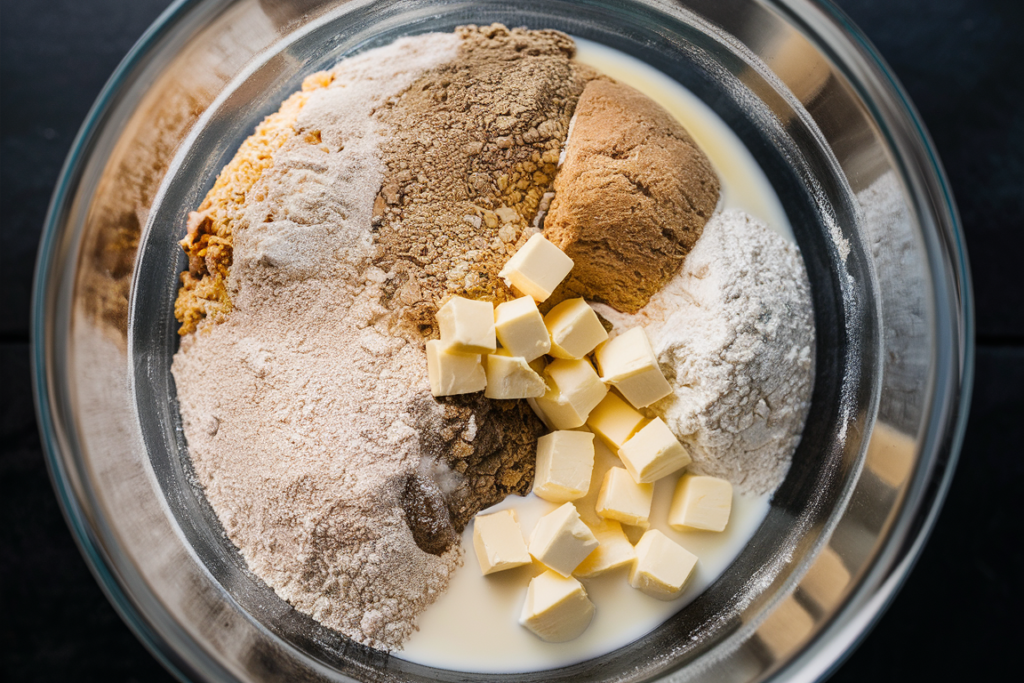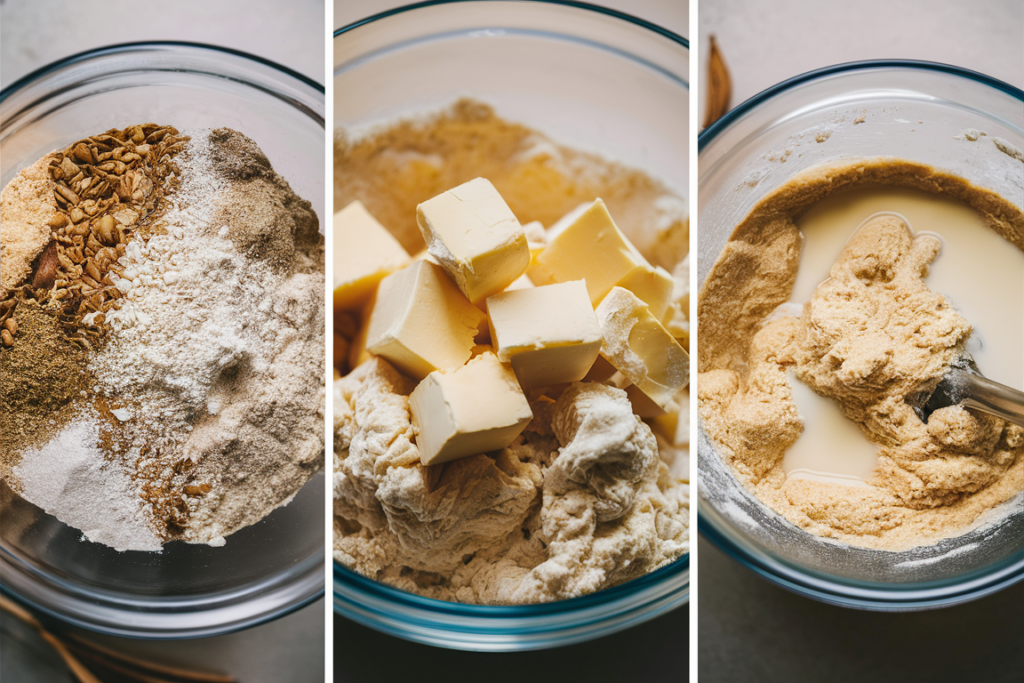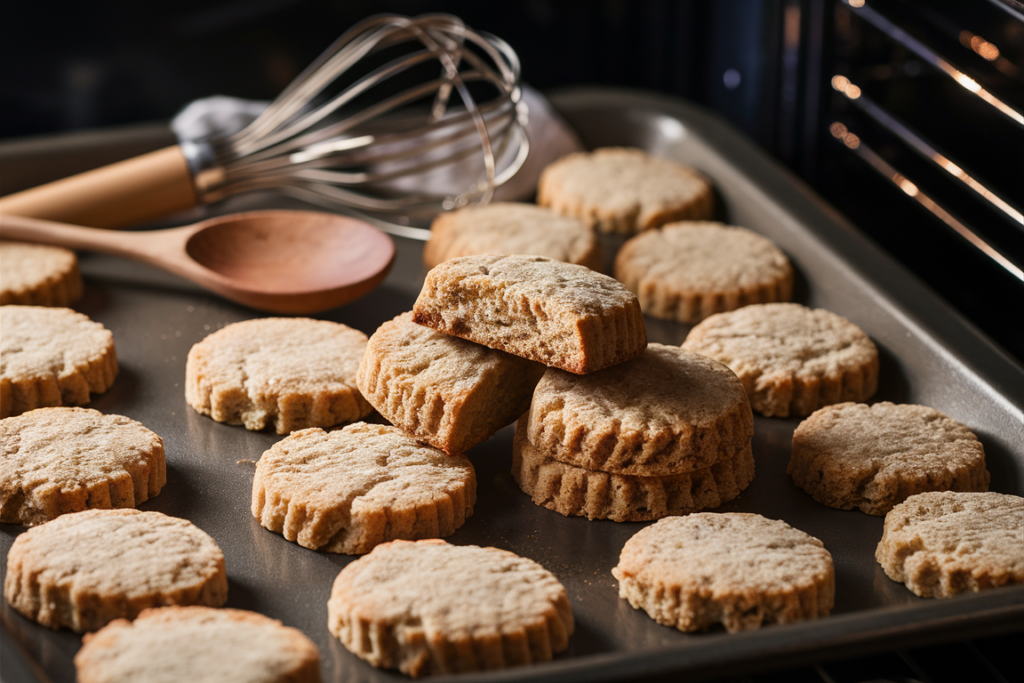Why Are My Gluten-Free Biscuits Hard? Solutions and Best Baking Tips
Gluten-free baking can feel like stepping into uncharted territory, especially when your biscuits turn out hard, dense, or downright unpalatable. If you’ve ever wondered, “Why are my gluten-free biscuits hard?” you’re not alone. The absence of gluten often makes it tricky to achieve that tender, flaky texture we all crave. This guide dives deep into the possible culprits behind tough gluten-free biscuits and provides practical solutions to help you bake the perfect batch every time. From flour selection to baking techniques, you’ll uncover everything you need to transform your biscuits from brick-like to bakery-perfect.

Part 1: Understanding Gluten-Free Biscuits
Introduction to Gluten-Free Baking
The allure of gluten-free baking lies in its inclusivity, catering to those with gluten sensitivities or celiac disease. However, it comes with its unique challenges. Gluten, a protein in wheat, plays a vital role in traditional baking by providing elasticity and structure. When this essential ingredient is removed, bakers must rely on substitutes to achieve similar results. This adjustment can often lead to hard or dense biscuits if the right balance isn’t struck.
Here’s the deal: gluten-free baking demands precision. From flour blends to liquid ratios, every element plays a part. By understanding the basics, you can avoid common pitfalls and create biscuits with a tender crumb and flaky layers.
Common Issues in Gluten-Free Biscuits
There’s no denying it: baking gluten-free biscuits can sometimes feel like an uphill battle. Some of the most common issues include:
- Hard Texture: Often caused by an imbalance of ingredients or improper mixing techniques, leading to a dense and unappetizing biscuit.
- Crumbliness: Without gluten, it’s easy for biscuits to fall apart. This happens when the binding agents or liquid ratios are off.
- Lack of Rise: A common woe in gluten-free baking, resulting from insufficient leavening or overworked dough.
When you understand these challenges, you’re better equipped to tackle them head-on.
Role of Gluten in Traditional Biscuits
So, what makes gluten so special in traditional biscuits? It’s all about structure and elasticity. When water interacts with gluten, it forms a stretchy network that traps air, allowing baked goods to rise and hold their shape. In biscuits, gluten helps create that sought-after combination of a soft interior and a slightly crispy exterior.
In gluten-free baking, replicating this magic is no small feat. Bakers must turn to alternatives like xanthan gum, guar gum, or psyllium husk to mimic the elasticity gluten provides. Yet, even with these substitutes, achieving the perfect biscuit often requires trial and error.
Part 2: Factors Contributing to Hard Gluten-Free Biscuits
Flour Selection and Its Impact
If you’ve ever wondered why your gluten-free biscuits turn out more like cookies or bricks, the type of flour you’re using could be the culprit. Not all gluten-free flours are created equal. Unlike wheat flour, which has a balance of protein and starch to support structure, gluten-free flours can be highly variable.
- Too Much Starch: Flours like tapioca and potato starch can lead to overly dense biscuits if overused.
- Lack of Protein: Without enough protein (like that found in almond or oat flour), the dough lacks the stability to hold its shape.
- Imbalanced Blends: Relying on a single flour type often results in uneven textures. A blend of flours—think rice flour, sorghum, and tapioca—yields the best results.
Pro Tip: Use a pre-mixed gluten-free flour blend labeled for baking. They’re specially formulated to achieve consistent results in recipes like biscuits.
Overmixing the Dough
When it comes to biscuit dough, less is definitely more! Overmixing is a surefire way to create dense, hard biscuits. While traditional dough can withstand some mixing thanks to gluten’s elasticity, gluten-free dough isn’t so forgiving.
- What Happens: Overmixing activates the starches in gluten-free flours, turning the dough into a gummy, sticky mess.
- How to Avoid It: Gently fold ingredients together just until combined. For extra control, mix by hand instead of using a stand mixer.
Think of the dough as delicate—it only needs enough mixing to come together. Trust me, your biscuits will thank you!
Fat Content and Distribution
Here’s the thing: fat is the key to a tender biscuit. It creates layers that melt in the oven, resulting in a flaky texture. But if the fat isn’t distributed evenly, you might end up with hard, greasy, or unevenly textured biscuits.
- Why It Matters: Cold fat, like butter or shortening, forms air pockets during baking, making the biscuit lighter.
- The Fix: Always chill your fat before adding it to the dough. Use a pastry cutter or your hands to work the fat into the flour until it resembles coarse crumbs.
Don’t skimp on this step—it’s the secret to creating biscuits that practically melt in your mouth!
Liquid Ratios and Hydration
Getting the liquid balance just right is another crucial factor. Too much liquid, and the dough becomes sticky and unworkable; too little, and your biscuits turn out dry and hard. Gluten-free flours tend to absorb more liquid than wheat flour, making hydration even more critical.
- Signs of Over-Hydration: Dough that spreads too much or feels slimy to the touch.
- Signs of Under-Hydration: Dough that cracks easily or feels too stiff to shape.
Pro Tip: Add liquid gradually while mixing, keeping a close eye on the texture. The dough should be soft but not sticky.
Part 3: Solutions and Best Practices
Baking Techniques and Temperature
Even with the perfect dough, baking gluten-free biscuits requires a little finesse. Temperature and technique can make or break your biscuits, quite literally.
- Preheating Is Essential: Always preheat your oven to the specified temperature (usually around 400°F to 450°F for biscuits). A hot oven ensures the fat melts quickly, creating steam and causing the dough to rise.
- Accurate Oven Temperature: Did you know many ovens run slightly hotter or cooler than their settings? Use an oven thermometer to double-check.
- Even Baking: Biscuits should be spaced evenly on the tray and baked on the center rack. Crowding them can lead to uneven cooking.
Pro Tip: Rotate your baking tray halfway through cooking to ensure consistent results.

Selecting the Right Gluten-Free Flour Blend
Using a quality gluten-free flour blend is one of the simplest ways to avoid hard biscuits. The best blends strike a balance between starches and protein-rich flours to mimic the properties of wheat flour.
- Recommended Blends: Look for blends containing a mix of brown rice flour, sorghum flour, and tapioca starch.
- DIY Blends: If you’re feeling adventurous, create your own blend. A good ratio to start with is 2 parts whole-grain flour, 1 part starch, and ½ part binding agent like xanthan gum.
When selecting a blend, check if it’s labeled as “all-purpose” or “for baking.” These blends are often pre-mixed with leavening agents and xanthan gum to make baking easier.
Common Problems with Gluten-Free Baked Goods and How to Fix
Proper Mixing Techniques
If your dough isn’t mixed properly, it can lead to uneven texture and dense biscuits. But, surprisingly, overmixing isn’t the only problem—undermixing can cause just as many issues.
- What to Do: Mix the dough only until the ingredients are just combined. You should still see small bits of fat throughout the dough; these will create steam as they bake, leading to flaky layers.
- Best Tools: Use a wooden spoon, your hands, or a pastry cutter to mix gently. Avoid heavy-duty mixers unless they have a slow speed setting.
Don’t forget: gentleness is key when working with gluten-free dough.
Incorporating Fats Effectively
Fats, like butter, shortening, or even coconut oil, are non-negotiable in biscuit recipes. However, the way you handle them can drastically change the texture of your finished product.
- Cold Fat Is Crucial: If the fat is too warm, it will mix completely into the dough instead of creating pockets. Keep it chilled until the moment you’re ready to use it.
- The Right Texture: After cutting in the fat, the mixture should resemble coarse sand or pea-sized crumbs. This ensures the fat melts evenly, leaving behind tiny air pockets that make biscuits fluffy.
Part 4: Solutions and Best Practices Continued
Adjusting Liquid Ingredients
Liquid ratios can make or break your gluten-free biscuits. Because gluten-free flours absorb liquid differently than wheat flour, hydration plays a critical role in achieving the right texture. Too little liquid leaves your biscuits dry and hard; too much creates a sticky mess.
- Start Gradually: Add your liquid (milk, buttermilk, or non-dairy alternatives) a little at a time. Watch for dough that is soft but not overly sticky.
- Monitor Flour Type: High-starch flours like tapioca or potato starch may require slightly less liquid. On the other hand, whole-grain flours like sorghum or millet might need a touch more.
- Tips for Dairy-Free Options: If you’re using almond milk or coconut milk, adjust the quantity slightly as they often behave differently than dairy milk in recipes.
Pro Tip: Let the dough rest for 10–15 minutes after mixing to allow the flour to fully hydrate before shaping and baking.

Baking Tips for Optimal Texture
If you want your gluten-free biscuits to have that ideal balance of a soft interior and a slightly crisp exterior, these baking tips will come in handy:
- Chill Your Dough: Cold dough ensures that the fat melts more slowly in the oven, creating better layers. If your kitchen is warm, pop the dough in the fridge for 15–20 minutes before baking.
- Use the Right Surface: Bake biscuits on a parchment-lined or silicone baking sheet to prevent sticking and ensure even browning.
- Handle With Care: When cutting out biscuits, press down firmly but don’t twist the cutter—twisting can seal the edges, preventing a good rise.
Pro Tip: Brush the tops of your biscuits with melted butter or a bit of cream before baking to give them a golden, glossy finish.
Altitude and Humidity Effects
It’s easy to overlook how altitude and humidity can impact your gluten-free baking, but these factors are critical:
- High Altitude: At higher elevations, liquids evaporate more quickly, and baked goods may dry out. Add an extra tablespoon of liquid or reduce your baking time slightly to compensate.
- Humid Environments: In areas with high humidity, flours may absorb more moisture from the air. Store flours in airtight containers, and reduce liquid slightly if your dough feels too sticky.
Whether you’re baking in the mountains or on the coast, adjusting for your environment ensures consistent results.
How to Fix The 5 Most Common Gluten-Free Baking Issues
Part 5: Additional Considerations
Storing Gluten-Free Biscuits
So, you’ve finally nailed the perfect batch of gluten-free biscuits—now, how do you keep them fresh? Unlike their wheat-based counterparts, gluten-free baked goods tend to dry out faster due to the lack of gluten’s moisture-retaining properties. But don’t worry! Proper storage can make all the difference.
- Cool Before Storing: Allow biscuits to cool completely on a wire rack to prevent condensation, which can make them soggy.
- Short-Term Storage: For the best taste, store biscuits in an airtight container at room temperature for up to two days. Include a small piece of bread or an apple slice in the container to retain moisture.
- Freezing Biscuits: For longer storage, freeze them. Place cooled biscuits in a freezer-safe bag or container, separating layers with parchment paper.
Reheating Tip: Warm biscuits in a preheated oven at 350°F for 5–7 minutes to refresh their texture. Avoid microwaving, as it often makes them rubbery.

Frequently Asked Questions
Why are my gluten-free biscuits dense?
Dense biscuits often result from overmixing the dough, using too much starch-heavy flour, or not incorporating enough leavening agents. To fix this, use a balanced gluten-free flour blend and mix the dough gently.
How can I make my gluten-free biscuits fluffier?
Ensure your fat is cold, avoid overworking the dough, and double-check your baking powder or soda’s freshness. A light touch when shaping the dough can also help.
Can I substitute dairy-free alternatives in gluten-free biscuits?
Absolutely! Almond milk, coconut milk, or oat milk work well as dairy substitutes. Use solid coconut oil or vegan butter in place of regular butter.
What is the best gluten-free flour for biscuits?
A blend of flours such as rice flour, sorghum flour, and tapioca starch works best. Pre-mixed gluten-free all-purpose blends are also convenient and reliable.
How does xanthan gum affect biscuit texture?
Xanthan gum acts as a binding agent, giving gluten-free dough elasticity and structure. Without it, biscuits can crumble and fall apart. Use it sparingly, as too much can make the dough gummy.
Can I freeze gluten-free biscuit dough?
Yes! Shape the dough into biscuits, place them on a baking sheet, and freeze until firm. Transfer to a freezer-safe bag and bake directly from frozen, adding a few extra minutes to the baking time.

